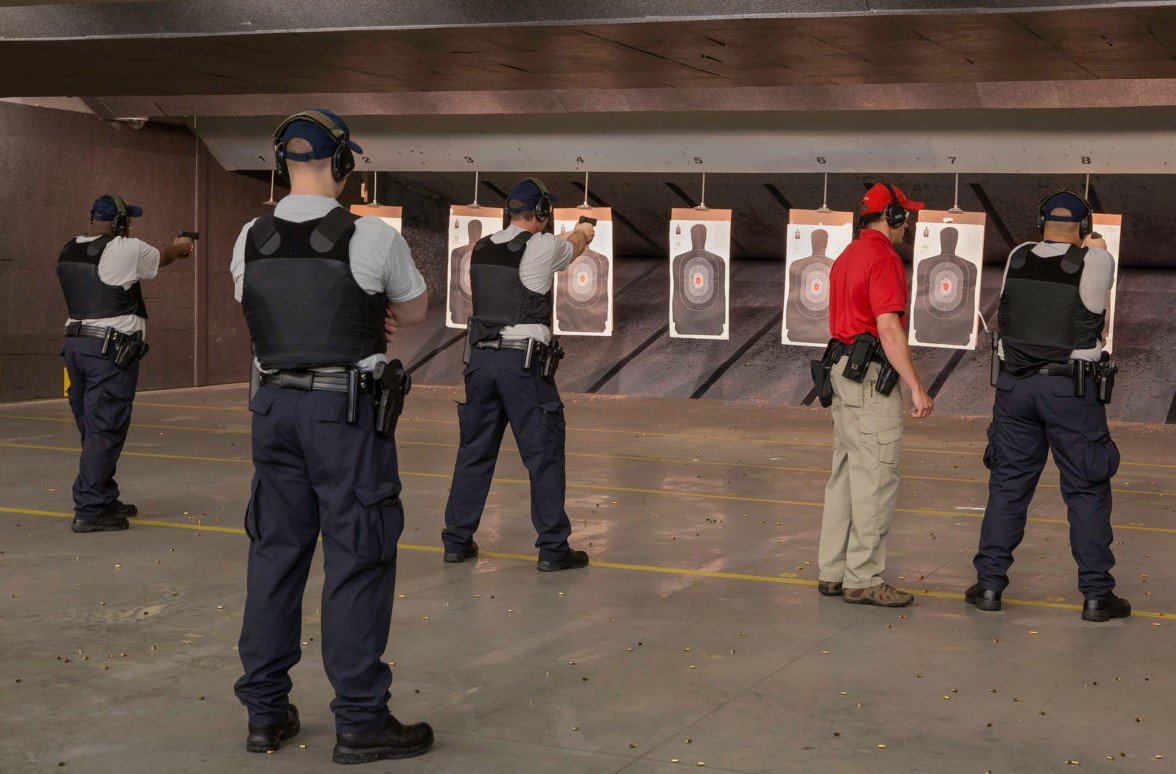Firearms training plays a critical role in ensuring both law enforcement and civilians are prepared to handle potentially dangerous situations. Whether it’s for public safety officers or private individuals, mastering firearm handling, shooting accuracy, and decision-making under pressure is essential. In today’s world, where security concerns are high, effective firearms training has become increasingly important for both law enforcement professionals and civilians seeking to protect themselves and their families. This training isn’t merely about shooting; it involves understanding the safe, responsible use of firearms while maintaining situational awareness.
Law Enforcement
Law enforcement officers are regularly confronted with situations that require them to make quick, life-altering decisions. The proper use of firearms can mean the difference between de-escalation and tragedy. Training ensures that officers not only develop technical skills but also cultivate the judgment necessary for using force appropriately.
Through rigorous firearms training, law enforcement officers learn to operate under pressure, increase their shooting accuracy, and apply the rules of engagement in various high-stress scenarios. They are trained to assess threats quickly, identify whether a suspect is armed, and react accordingly, all while protecting the public. Training also focuses on ensuring that officers maintain control over their emotions, preventing unnecessary violence while fulfilling their duty to protect and serve.
Moreover, firearms training for law enforcement emphasizes continuous learning and adaptation. Officers need to regularly refresh their skills to remain proficient, especially as new weapons, tactics, and technologies are introduced. This ongoing education is vital for maintaining safety both for the officers and the community they serve.
Civilian Firearms Training for Self-Defense
While law enforcement receives extensive firearms training, civilians are increasingly seeking training for self-defense. In uncertain times, personal safety has become a top priority for many individuals. Civilians who legally own firearms for protection must be adequately trained to use them safely and effectively.
The focus for civilian firearms training is not only on handling a gun but also on the legal and ethical implications of using a firearm for self-defense. Civilian trainees are taught the importance of situational awareness, understanding when to draw a firearm and the ramifications of firing it. Training programs often incorporate defensive scenarios that mirror real-life situations, helping civilians build the confidence to respond to threats effectively without overreacting or endangering others.
Incorporating realistic simulations is key to making civilian training effective. Scenarios, where quick decisions must be made help, develop the muscle memory and reflexes necessary for defensive actions. Moreover, the training equips individuals with skills beyond firing a weapon, such as de-escalation techniques, situational control, and recognizing when not to use a firearm.
Balancing the Needs of Law Enforcement and Civilian Security
Firearms training for law enforcement and civilians intersects with their shared goal: security. However, the needs and approaches differ. For law enforcement, firearms training is comprehensive, covering a broad spectrum of possible scenarios they might encounter on the job. The training emphasizes restraint and the use of force only when absolutely necessary, as officers are public servants tasked with upholding the law and protecting citizens.
Civilians, on the other hand, undergo training with a narrower focus—self-defense. Their training emphasizes defensive strategies, such as situational awareness, disengagement, and using force as a last resort. Civilians must understand that their legal responsibilities differ from those of law enforcement, and any use of firearms will be scrutinized heavily under self-defense laws.
In both cases, the role of firearms training is to promote safety and responsible use. Effective training can reduce the likelihood of accidents, unnecessary violence, and the misuse of firearms. For civilians, specialized courses like defensive pistol training for self-defense offer practical knowledge for those who are serious about protecting themselves. This type of training prepares individuals for real-world scenarios, building their skills to respond appropriately to threats, particularly in confined environments like homes or vehicles.
Firearms Training Techniques
Advancements in technology and instructional methods have significantly enhanced firearms training over the years. Law enforcement agencies are utilizing state-of-the-art tools such as virtual reality simulators, which allow officers to experience various conflict situations without the associated risks. These simulations can recreate stressful conditions, from active shooter scenarios to domestic disturbances, helping officers practice decision-making in a controlled environment.
For civilians, many training programs now offer courses tailored to specific self-defense needs, incorporating drills that mimic home invasions, carjackings, and other threats. The emphasis is on real-world applications of firearm handling, helping individuals prepare for the unexpected while maintaining composure.
Moreover, both law enforcement and civilian firearms training are now heavily influenced by data. Shooting accuracy, response times, and decision-making under pressure are measurable, and modern training programs analyze this data to refine techniques and ensure effectiveness. Law enforcement agencies frequently update their training based on crime trends and situational analysis to keep officers prepared for modern threats.
Addressing Misconceptions
A common misconception is that firearms training solely focuses on teaching individuals how to shoot. In reality, firearms training—whether for law enforcement or civilians—extends far beyond that. It’s about responsible ownership, threat assessment, and understanding the legal consequences of using a firearm. For law enforcement, the priority is protecting the public while minimizing the risk of harm. For civilians, it’s about knowing how and when to defend oneself legally and ethically.
Training also stresses that firearms are not the only tools available in conflict resolution. Both law enforcement and civilians are taught non-lethal tactics and the importance of de-escalation. Knowing when to avoid confrontation is just as critical as knowing when to use force.
Firearms Training as a Pillar of Public Safety
Firearms training is an essential pillar in maintaining public safety, ensuring that those entrusted with the use of firearms—whether law enforcement or civilians—are capable, responsible, and prepared. For law enforcement, training builds the foundation for effective policing, helping officers protect the public while upholding the law. For civilians, training provides the knowledge and confidence to protect themselves legally and responsibly.
In both contexts, firearms training is about much more than technical proficiency. It’s about developing judgment, discipline, and a deep understanding of the consequences of using force. With comprehensive training, law enforcement officers can perform their duties more effectively, while civilians can protect themselves in an increasingly uncertain world. Both groups share the responsibility of promoting safety and reducing unnecessary harm through the responsible use of firearms.
Conclusion
Firearms training is a crucial component of both law enforcement operations and civilian security. As society places increasing demands on safety, effective training ensures that those who carry firearms do so responsibly and with the necessary expertise. By integrating skills such as situational awareness, legal knowledge, and defensive strategies, firearms training plays a pivotal role in upholding safety, security, and responsible firearm use for all.



